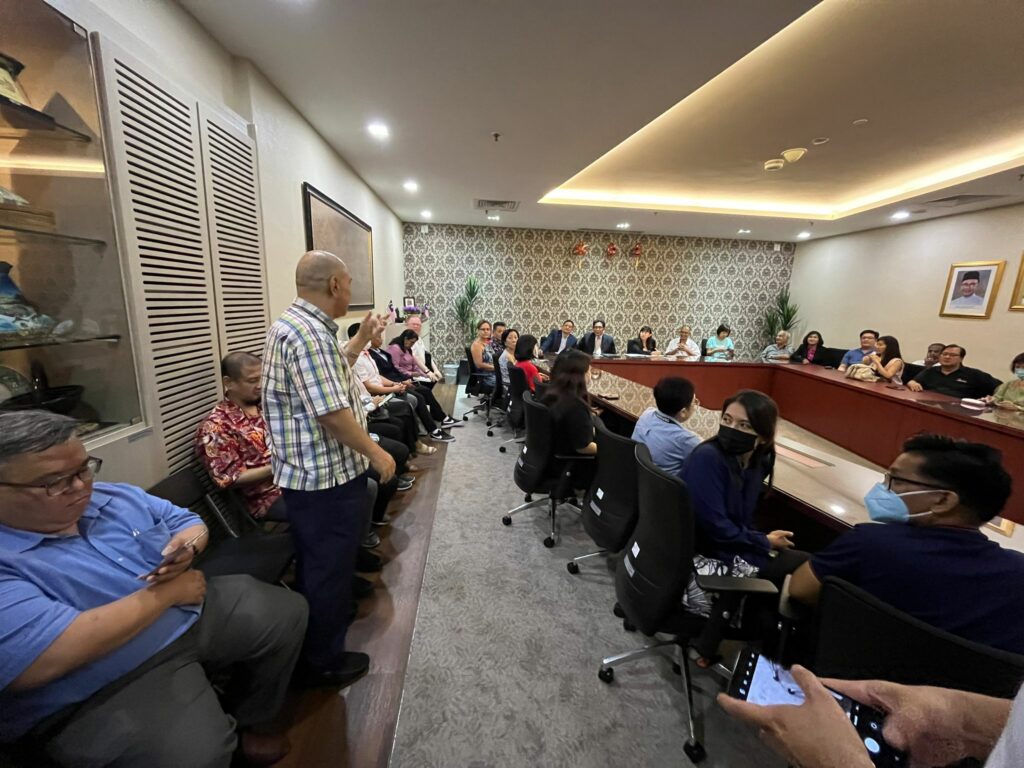
Yesterday , I had the privilege of visiting Singapore and witnessing firsthand the resilience of its tourism industry.
Despite the challenges posed by the global pandemic, Singapore has made a remarkable comeback by implementing smart and effective strategies that have not only restored, but also improved its tourism offerings.
From its world-renowned attractions to its cutting-edge infrastructure and services, Singapore serves as a model for other destinations looking to boost their tourism industry.
Singapore has become one of the most popular tourist destinations in Southeast Asia, attracting a growing number of visitors with its thriving tourism industry and world-class attractions.
Singapore is popular among international tourists for several reasons, including:
- Cleanliness and safety: Singapore is renowned for its clean and safe streets, which creates a positive image for tourists.
- Efficient transportation: Singapore’s comprehensive public transportation system, including its MRT network, taxis, and buses, makes it easy for tourists to get around.
- Diversity of attractions: Singapore offers a wide range of attractions and activities, including world-class museums, shopping, and dining experiences, theme parks, and lush gardens.
- Rich cultural heritage: The country is a melting pot of cultures, with Chinese, Malay, Indian, and European influences, offering a unique cultural experience for visitors.
- Strong tourism infrastructure: Singapore has a well-developed tourism infrastructure, including hotels, attractions, and facilities, making it a convenient destination for tourists.
- Business hub: As a leading financial and business center, Singapore attracts many business travelers and offers plenty of opportunities for conventions, conferences, and exhibitions.
- Well connected -Changi International airport one of the largest transportation hubs in Asia and offers flights to numerous destinations worldwide. Even Marina Bay Cruise Centre in Singapore is a busy port and handles many cruise ships and became a major cruise hubs in Asia
If Malaysia wants to maintain its competitiveness as a tourist destination and continue to attract visitors from around the world, it will need to look at the strategies that have made Singapore so successful in promoting tourism and consider how these strategies can be adapted and implemented in Malaysia.
In this article, I will delve into the strategies that have made Singapore’s tourism industry a success and how these can be emulated by other destinations.
Here are seven ways in which Malaysia can emulate Singapore in promoting tourism:
- Enhancing connectivity is an important recipe in which Malaysia can emulate Singapore’s success in the tourism industry.
By improving its air, sea, and land transportation links, Malaysia can make it easier for visitors to reach its destinations and explore all that the country has to offer.
This can include investing in the maintenance of airports , jetty ( especially in Kuala Perlis) and ports, upgrading existing transport infrastructure, and implementing seamless and efficient transport systems.
Furthermore, by establishing strong partnerships with international airlines and cruise lines, Malaysia can increase its visibility and accessibility to a global audience.
By making it easier and more convenient for visitors to reach its destinations, Malaysia can create a more appealing and attractive tourism offering that can rival that of Singapore and other leading destinations. - Develop niche tourism products: Singapore has successfully developed a range of niche tourism products, such as eco-tourism, cultural tourism, and adventure tourism, which appeal to specific segments of the tourism market.
Singapore got ECO TOURISM product mehh??? TERPERANJAT kan ?? one of the example is Gardens by the Bay
It is one of the most popular tourist attractions in Singapore, known for its stunning horticultural displays, including the iconic Supertree Grove and the Flower Dome, which houses a collection of exotic plants from around the world.
Can Malaysia do and develop the same concept ? - Improve digital marketing presence: In today’s digital age, having a strong online presence is crucial for any tourist destination. Malaysia can focus on improving its digital marketing presence, including enhancing the quality and visibility of its tourism website and utilizing social media platforms to reach potential visitors.
- Partnership with local businesses: Another strategy that has been successful in Singapore is partnering with local businesses to promote tourism. Malaysia can also partner with its retails restaurants, venue operators and communities to create promotions that will appeal to visitors.
- Improve visitor services: Providing excellent visitor services is essential for creating a positive tourist experience. Malaysia can focus on improving visitor services, such as offering multilingual support, providing currency exchange services, and improving access to tourist information.
- Build strong relationships with key tourist markets: Singapore has built strong relationships with key tourist markets, such as China and Australia, which have helped to drive growth in its tourism industry. Malaysia can also focus on building strong relationships with these and other key tourist markets, working with its tourism board and other government agencies to promote tourism in the country. With our new Tourism Minister who has a good connection with China, we hope we can build stronger relationship with China.
- Invest in tourism education and training: Finally, Malaysia can invest in education and training programs for its tourism industry workers, helping to ensure that the country’s tourist industry remains competitive and continues to attract visitors from around the world.
One of the most important lesson that we can learn from Singapore is Cleanliness and Safety:
Singapore is known for its clean streets, safe environment, and strict laws, which contributes to its reputation as a tourist destination.
Malaysia can improve its cleanliness and safety efforts through PBT or Local Councils to provide a more positive experience for visitors.
Another thing that we can learn from Singapore is how they OPTIMIZE WHAT THEY HAVE :
Singapore has leveraged its limited physical resources and created iconic attractions and experiences that are not only visually stunning, but also culturally significant.
For example, the Gardens by the Bay is a perfect example of how the country has maximized its green space to create a world-renowned attraction that appeals to visitors of all ages and backgrounds.
I had the opportunity to visit GARDEN BY THE BAY recently and I was so impressed with what Singapore can create from their limited resources.

Why Garden By The Bay is so famous ??
1. Unique design and architecture: Garden by the Bay is a cutting-edge and innovative garden that features futuristic conservatories and Supertree structures that provide an unforgettable visual experience.
2.Diverse plant life: Garden by the Bay showcases a diverse range of plants from around the world, including tropical and temperate species, as well as rare and endangered plants.
3.. Interactive exhibits: Garden by the Bay provides interactive and educational exhibits that allow visitors to learn about plants, horticulture, and conservation.
4.. Nightly light shows: The Supertrees come alive at night with a stunning light and sound show that attracts visitors from around the world.
5.. Convenient location: Garden by the Bay is conveniently located in the heart of Marina Bay, one of Singapore’s most popular tourist areas, making it easily accessible for visitors.
6. World-class facilities: Garden by the Bay features world-class facilities, including restaurants, cafes, gift shops, and restrooms, making it an enjoyable and comfortable place to visit.
7.. Sustainability efforts: Garden by the Bay is a model of sustainability, showcasing environmentally-friendly initiatives, such as renewable energy and water conservation, which appeals to environmentally-conscious visitors.
According to the reports from 2019, Garden by the Bay attracts approximately 5 million visitors per year. Based on these numbers, it can be estimated that the garden attracts approximately 400,000 to 500,000 visitors per month. Ticket price for each segment such as ‘FLOWER DOME ‘ cost S$ 20 per person . Imagine for just one area they managed to collect S$10 millions per month.
Is it worth it ?
Like any tourist attraction that gets this much attention, we are bound to ask: Is it worth the hype? Well, in my own opinion, it’s simple: Yes, it is
Garden by the Bay has received more than 50 million visitors on its grounds since its opening in 2011 and a look at their annual financial report published at the end of Financial Year 2017/18, the Gardens has a whopping S$28.3 million profit!
Question : Can Malaysia create it’s own version of Garden by the Bay?

Of course we can !
However, there are several factors that need to be considered to ensure its success::
- Unique and innovative design: To stand out and compete with other popular tourist destinations, Malaysia’s version of Garden by the Bay should have a unique and innovative design that showcases its own distinct cultural and natural heritage.
- Diverse plant life: Malaysia is home to a rich and diverse range of plant life, and this should be highlighted and showcased in the garden.
- Interactive exhibits and educational programs: Visitors should be able to learn about the plants, culture, and heritage of Malaysia through interactive exhibits and educational programs.
- Sustainability: Malaysia’s version of Garden by the Bay should be environmentally sustainable, showcasing initiatives such as renewable energy and water conservation.
- Convenient location: The garden should be located in a convenient and accessible location that is easily reached by visitors from around the country and the region.
- World-class facilities: The garden should have world-class facilities, such as restaurants, cafes, gift shops, and restrooms, to provide a comfortable and enjoyable experience for visitors.
There are several challenges that Malaysia may face in creating its own version of Garden by the Bay:
- Funding: Creating a large-scale and technologically advanced garden like Garden by the Bay requires significant financial investment. Malaysia may need to secure funding from multiple sources, including government funding, private sector investment, and public-private partnerships.
- Competition with other tourist destinations: Malaysia is a popular tourist destination and faces competition from other countries in the region. To stand out, Malaysia’s version of Garden by the Bay must offer unique and innovative attractions that set it apart from other destinations.
- Sustainability: Sustainability is a key factor in the success of Garden by the Bay, and Malaysia may face challenges in implementing sustainable initiatives and infrastructure, such as renewable energy and water conservation systems.
- Expertise and technology: Creating a high-tech garden like Garden by the Bay requires a significant level of expertise and technology, and Malaysia may need to import or attract experienced professionals from around the world to ensure its success.
- Public support: To be successful, Malaysia’s version of Garden by the Bay must have the support of the local community and the government. This may require significant public outreach and education efforts to build support and ensure its long-term success
By overcoming these challenges and implementing effective strategies, Malaysia can create a successful version of Garden by the Bay that attracts visitors and showcases its unique cultural and natural heritage.
Singapore has made use of its position as a hub for international trade and commerce to attract visitors from around the world. By focusing on what it has to offer, and finding creative and innovative ways to optimize its resources, Singapore has built a tourism industry that is both sustainable and thriving.
Malaysia has a lot to gain by emulating Singapore’s approach to tourism. Singapore is known for its high standards of cleanliness and safety, which are major draws for tourists. The country has also invested heavily in iconic attractions like Gardens by the Bay and Marina Bay Sands, which have helped it establish a strong reputation as a tourist destination. By following Singapore’s example, Malaysia could attract more quality tourists and generate more revenue from tourism.
Additionally, by investing in quality infrastructure and attractions, Malaysia could create jobs and support economic growth in the country.
P.S : For Malaysian DMC , Product Operators and TRAVEL AGENTS who want to promote your own product and leverage Singaporean tourist market , learn more at https://tourismgamechanger.com/nets






Good write up Uzaidi. Lots of food for thoughts established in your comments. Will and Can Malaysia come towards comparative wavelengths with Singapore? YES and NO !. Private participation, technology, digitalisation and proper planning and delivery, ONLY if passionately implemented , with experienced stakeholders, then we can see a YES!.
We have the advantage of greater land, heritage and products which are lushings its beauty without showcase for economic developements.
Hope we start a new direction with new people and politics .
Thanks for the response . Great input